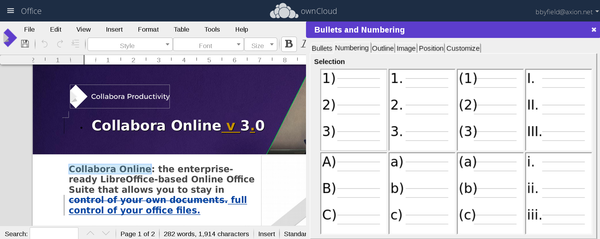


So if you want to be able to scale Nextcloud you will have to use some storage that supports the ReadWriteMany access mode. That's a problem if you use a ReadWriteOnce persistent volume for Nextcloud, since that volume cannot be shared by multiple pods. SuccessfulJobsHistoryLimit: 2 horizontal pod autoscaler (HPA)īy default, the Helm chart configures an HPA so to scale pods for the main Nextcloud deployment as the load increases. The Helm chart creates a Kubernetes cronjob for this, so you need to make sure you enable it with a schedule so that the jobs run frequently, say every 5 minutes: cronjob: Nextcloud needs to perform various maintenance tasks regularly (see this page for details), and that's done with a task scheduled with cron. So in this post I'm basically just sharing what I changed from the default values.yaml in the repo, so to save you some time. Some things from the reference values.yaml file are missing, creating confusion and leading to errors and things that don't work properly or not at all.
HOSTED COLLABORA ONLINE TRIAL
The reason why I am writing this post is that the Helm chart is confusing, and it took me some trial and error to get a fully working deployment. Object storage is also typically cheaper than block storage. The advantage with an object storage service is that your storage scales with your data seamlessly, so you don't have to increase storage capacity (like resizing persistent volumes in Kubernetes) as the amount of data grows. Subsequent incremental sync is usually reasonably fast. As one might expect, there is a performance hit compared to block storage if you have a lot of data to sync, but it is usually noticeable only when you sync all the data the first time. In most cases, Nextcloud is configured to use local or network based block storage to store the data, but I prefer using an S3 compatible object storage service such as Wasabi.
HOSTED COLLABORA ONLINE HOW TO
There are various ways to install Nextcloud on your servers, but in this brief post we'll see how to deploy it in Kubernetes using the official Helm chart. Several managed hosting services for Nextcloud exist - I was previously using Hetzner's "Storage Share" service - but most people will likely prefer hosting it themselves, and that's what I am doing now too. It focuses on privacy of your data (which is especially important in GDPR-land) and ease of use, as well as enterprise grade security and control. Nextcloud is a fork of another open source project called OwnCloud and written in PHP, but it has been evolving on its own for a while now and has become more popular than OwnCloud itself. One feature that many people would like and that is missing is email hosting Nextcloud offers a Mail app but that's just a client, so you will need to use something else to host your email. But really there's a ton of features you can get by installing the many apps available. Other commonly used features are calendars, contacts, and the Talk app that adds instant messaging and video conferencing to the platform. I use OnlyOffice because it's lighter, with a better interface and much better compatibility with Microsoft's file formats. I particularly love the integration with OnlyOffice and Collabora Online, which makes Nextcloud a good self hosted alternative to Google Drive and Office 365 for realtime, collaborative document editing.
HOSTED COLLABORA ONLINE FREE
It's open source and totally free to use (with optional paid support and an enterprise edition if you need it), and very rich in features, especially with the many add-ons (or "apps") available that extend the platform with custom functionality. Unlike with the aforementioned centralized cloud storage services, your data remains under your control and you can access it and sync it with a variety of devices through a web interface as well as desktop and mobile clients. Nextcloud is one of the most popular (if not the most popular) self hosted/on-premises platforms for file sharing, collaboration and more. These services are inexpensive but there are some implications concerning privacy when using them.

The other two offer many more features, including realtime collaborative document editing and videoconferencing. Dropbox has some additional features but the core focus is file syncing and sharing. Various services exist providing cloud storage, file syncing/sharing and collaboration, with the most popular ones being Dropbox, Google Drive and Microsoft OneDrive/Office 365.


 0 kommentar(er)
0 kommentar(er)
